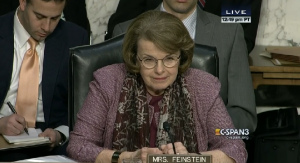AP Also Notes the Torture and Drones Double Standard
After the Torture Report came out, I argued we ought to take a broader lesson from it about failures of accountability in CIA’s covert programs. Specifically, I noted how the drone program — which operated under the same Memorandum of Notification as torture for years — appeared to suffer from the same problems as the torture program.
On the second day of Barack Obama’s presidency, he prohibited most forms of physical torture. On the third, a CIA drone strike he authorized killed up to 11 civilians.
[snip]
Other reporting may explain why the report portrays Bush, rightly or wrongly, as so uninvolved in the torture program. Both Woodward and Mayer explain that the Sept. 17, 2001, MON was designed to outsource all the important decision-making to the CIA. “To give the President deniability, and to keep him from getting his hands dirty,” Mayer writes in The Dark Side, “the [MON] called for the President to delegate blanket authority to Tenet to decide on a case-by-case basis whom to kill, whom to kidnap, whom to detain and interrogate, and how.” Whether or not Bush had knowledge of what was going on, the very program itself was set up to insulate him from the dirty work, giving him the ability to claim ignorance of a torture program everyone else knew about. (Later, Bush claimed that he was fully briefed.)
But as we know, this insulation created the conditions for a program that was allowed to spin so horribly out of control that the CIA was able to misplace 29 detainees and not worry all that much.
The implications of this subterfuge, however, do not end with the torture program. Nor with George W. Bush. This is the same MON that authorizes the CIA’s current drone program. Presumably that means the drone program is characterized by the same unaccountable structures.
Indeed, after Obama escalated the CIA’s use of drones when he took office, the program suffered from some of the same problems as the torture program. The CIA appears to have misinformed Congress about the details, given claims by people like House Intelligence Committee ranking member Dutch Ruppersberger (D-Md.) that the program had “very minor” civilian casualties, despite the fact that evidence shows that more than 1,000 people have been killed while targeting fewer than 50 terrorists. And like the CIA’s detention and torture of the wrong suspects, a number of drone strikes have killed the wrong people — but with even greater frequency.
Top-ranking members of Congress, including Sen. Dianne Feinstein (D-Calif.), the chair of the Senate Intelligence Committee, have long insisted they have more oversight over the drone program than they did over torture. But the number of significant mistakes — take, for example, the attack on a wedding party earlier this year — suggests that oversight isn’t preventing the same kind of mistakes that happened with torture. Moreover, as with the torture program, the congressional intelligence committees aren’t able to get the information they request from the White House and the CIA. It was only after years of requests that the intelligence committees were allowed to review the administration’s justification for having the CIA kill Anwar al-Awlaki, a U.S. citizen, with a drone strike. Worse, the reports that the CIA killed Awlaki’s 16-year-old son, Abdulrahman, are also shrouded in secrecy and full of inconsistencies.
AP’s Ken Dilanian has a long article in similar vein, noting that the drone and Non Official Cover program have never been scrutinized this closely, in spite of complaints of abuse.
Yet the intelligence committees have never taken a similar look at what is now the premier counterterrorism effort, the CIA’s drone-killing program, according to congressional officials who were not authorized to be quoted discussing the matter.
Intelligence committee staff members are allowed to watch videos of CIA drone missile strikes to monitor the agency’s claims that civilian casualties are limited. But these aides do not typically get access to the operational cables, message traffic, interview transcripts and other raw material that forms the basis of a decision to kill a suspected terrorist.
Nor have they been able to examine cables, emails and raw reporting to investigate recent perceived intelligence lapses, such as why the CIA failed to predict the swift fall of Arab governments, Russia’s move into Ukraine or the rapid military advance of the Islamic State group.
And there have been no public oversight reports on the weak performance of the CIA’s multibillion-dollar “nonofficial cover” program to set up case officers posing as businessmen, which has met with some criticism.
In addition to the nice review of how Dianne Feinstein’s staffers’ managed to do this work (which you should click through to read), Dilanian also got a fairly scathing interview with Feinstein herself (though she insists drones get enough oversight). In it, she professes to have lost her faith that CIA is telling the truth in briefings.
The torture investigation, she said in an interview with The Associated Press, has “changed how I view management in the CIA. It’s changed how I view the brotherhood of the CIA. I believe you do not lie to your oversight committee. And I think the way the program was managed was sloppy.”
The lesson for traditional intelligence oversight, she said, was that “you can sit and listen to a report ??? you don’t know whether it’s all the truth, you don’t know what gets left out. And part of (CIA) tradecraft is deception.”
She said she believes the CIA continues to lie about the effectiveness of torture.
And she dishes on White House collaboration with the CIA to overclassified the report.
But while Obama publicly supported releasing the report’s findings and conclusions, the administration privately pushed to keep significant parts of the summary secret, Feinstein said.
“The president said that he agreed the report should be made public, that he doesn’t condone (the harsh interrogations), but it sort of ends there,” Feinstein said.
She said she perceived “an incredible closeness” between Obama’s chief of staff, Denis McDonough, and Brennan, “and the president and John Brennan.” In negotiations with Feinstein about what parts of the summary should be censored, McDonough spoke for the White House, but there was no daylight between him and the CIA, she said.
Feinstein said both wanted to black out large chunks of the executive summary in the name of protecting sensitive information.
It also provides more details on the attempt to fearmonger DiFi into suppressing the report at the last minute, including that Democrats found James Clapper’s report on the dangers of releasing it to be all that convincing.
This is, I think, one of the necessary conclusions to draw from the Torture Report: oversight isn’t working, because — as DiFi notes — CIA’s tradecraft is all about deception.
Let’s hope she really has learned a bit from this process, even if it’s too late to do anything about it as Chair.


